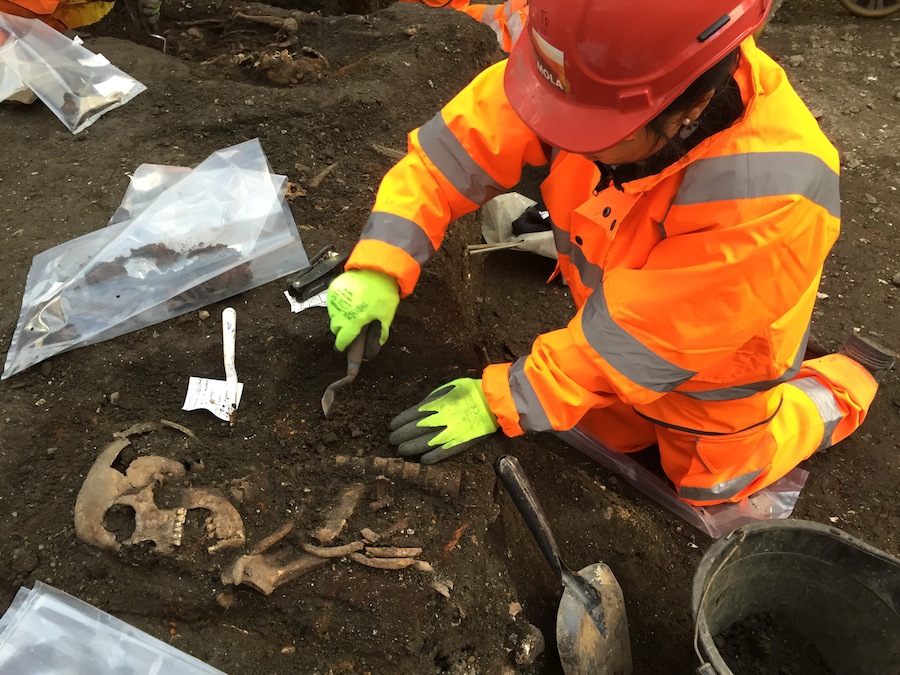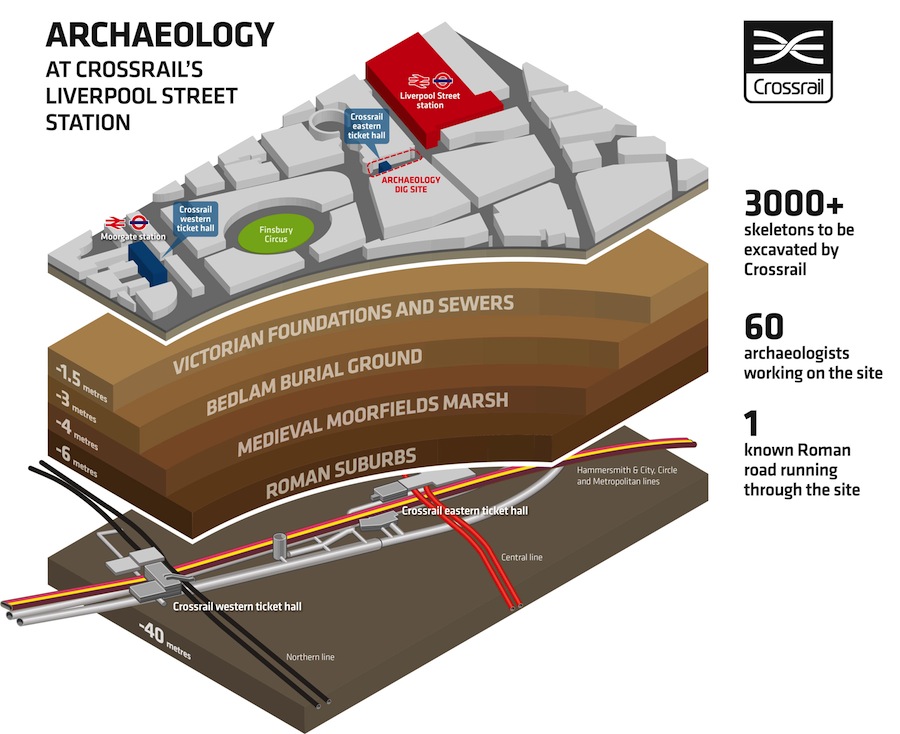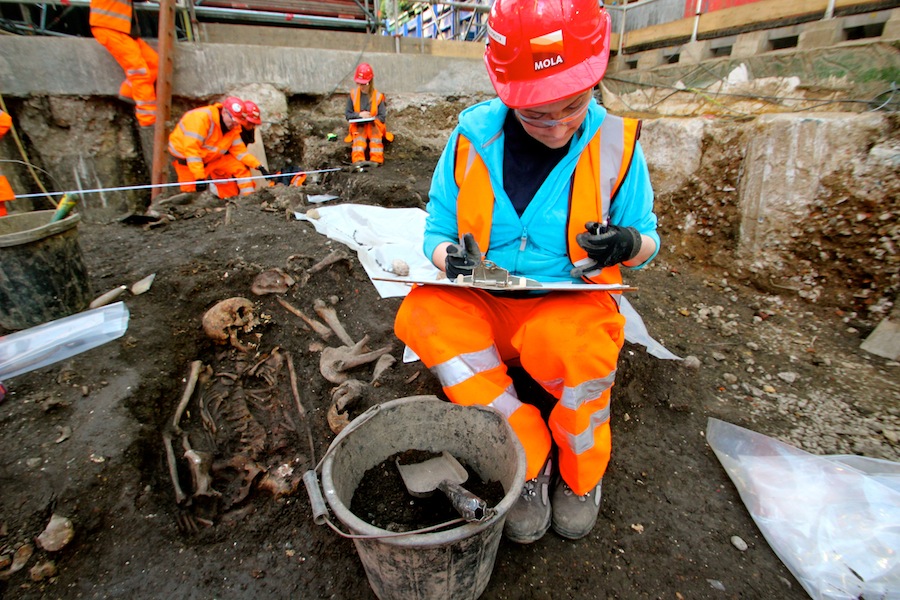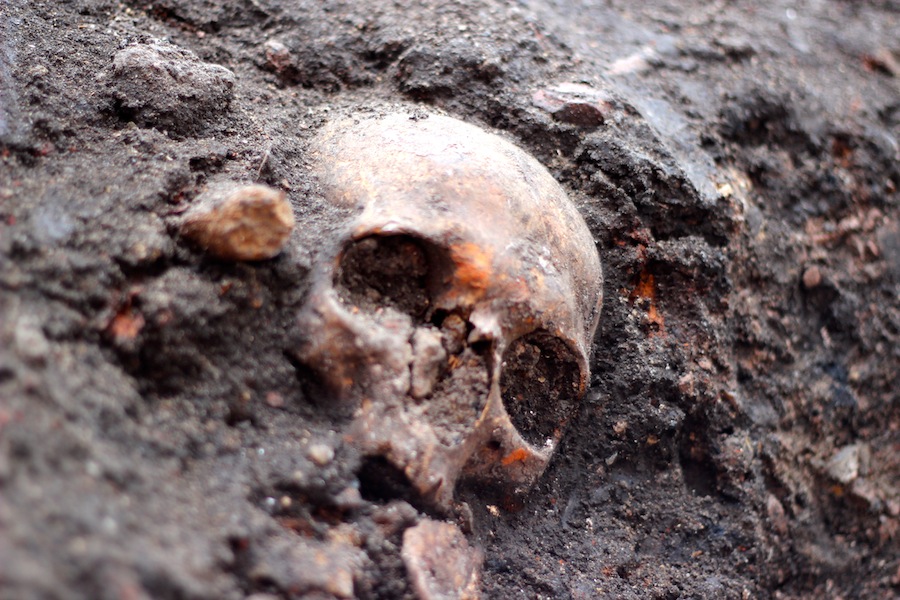Images: Thousands of Skeletons Buried Under Central London
To make way for a new subway station, archaeologists began excavating a graveyard beneath the streets of London. They expect to find about 3,000 graves that date back to the 16th and 17th centuries. [Read full story about London's 'Bedlam' graveyard]
Used from 1569 to at least 1738, the Bedlam burial ground was also called the Bethlem burial ground and the New Churchyard. It got its name from the nearby original location of the Bethlem Royal Hospital (notoriously known as Bedlam), which treated mentally ill patients. (Credit: Crossrail)
Archaeologists are excavating and documenting the graves at the site of the Liverpool Street station, as part of ongoing construction on a new east-west train line, dubbed Crossrail. (Credit: Crossrail)
Experts at the Museum of London Archaeology (MOLA) have been working with Crossrail for more than a decade to prepare for this large-scale excavation. Over the next month, 60 archaeologists will work in shifts, six days a week, to excavate the bodies at the construction site, Crossrail officials said. (Credit: Crossrail)
It's possible that archaeologists could find as many as 3,000 skeletons in their trenches. The graveyard was an overflow cemetery for the rest of London, and many of the burials overlap. There are typically about three to six skeletons buried per 35 cubic feet (1 cubic meter), said MOLA project manager Nick Elsden. (Credit: Crossrail)
Volunteers who pored over historic parish burial registers from the City of London were able to compile the names of more than 5,000 people buried at the site. Still, that's just a fraction of the estimated 20,000 Londoners who were buried there over two centuries. (Credit: Crossrail)
This gravestone, one of the few found at the site, marked the final resting place of a woman named Mary Godfree, who died of the plague. (Credit: Crossrail)
Get the world’s most fascinating discoveries delivered straight to your inbox.
Archaeologists hope that they might be able to help scientists understand the plague-causing bacteria strain through tests on other excavated victims of the Black Death. (Credit: Crossrail)
An artist's rendering shows what the new Liverpool Street Station will look like once the excavation and construction is complete. (Credit: Crossrail)
Follow Megan Gannon on Twitter. Follow us @livescience, Facebook & Google+.











